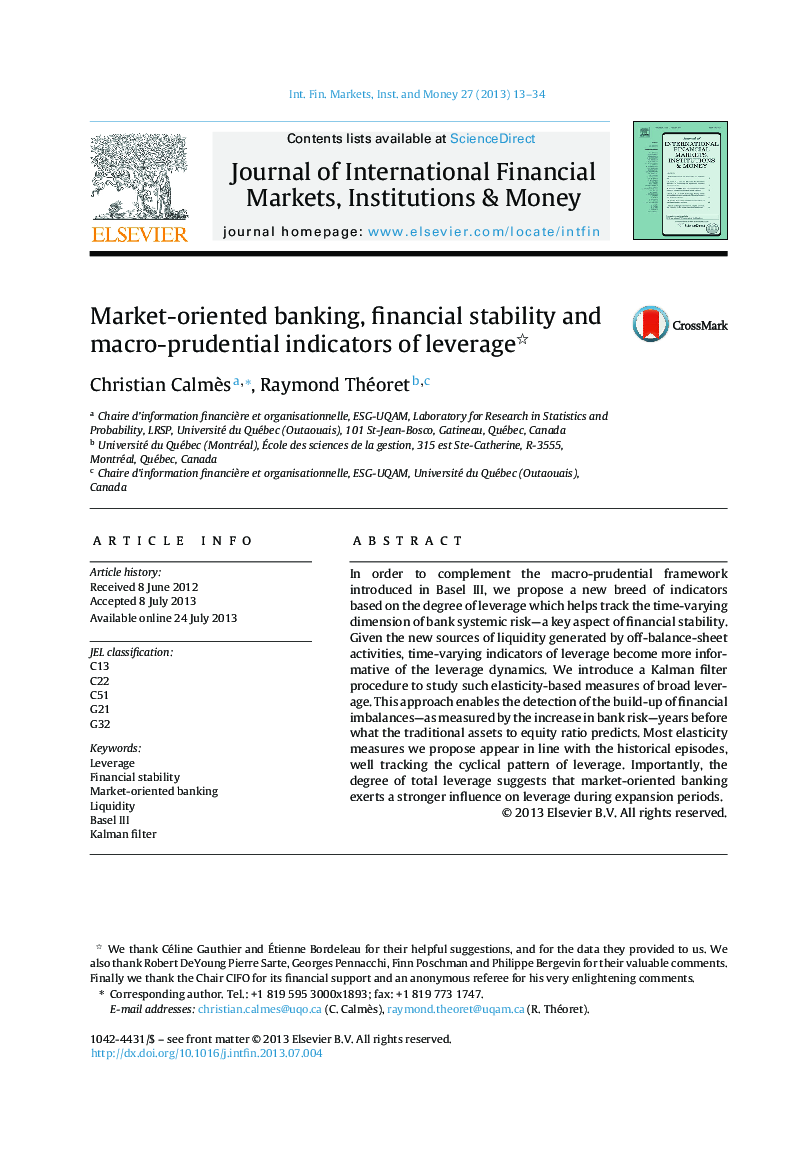| Article ID | Journal | Published Year | Pages | File Type |
|---|---|---|---|---|
| 964020 | Journal of International Financial Markets, Institutions and Money | 2013 | 22 Pages |
•Elasticity-based measures track the cyclical pattern of leverage.•The degree of total leverage suggests that market-oriented banking exerts a stronger influence during expansion periods.•Our indicators of leverage will complement those proposed by Basel III, like the leverage ratio.
In order to complement the macro-prudential framework introduced in Basel III, we propose a new breed of indicators based on the degree of leverage which helps track the time-varying dimension of bank systemic risk—a key aspect of financial stability. Given the new sources of liquidity generated by off-balance-sheet activities, time-varying indicators of leverage become more informative of the leverage dynamics. We introduce a Kalman filter procedure to study such elasticity-based measures of broad leverage. This approach enables the detection of the build-up of financial imbalances—as measured by the increase in bank risk—years before what the traditional assets to equity ratio predicts. Most elasticity measures we propose appear in line with the historical episodes, well tracking the cyclical pattern of leverage. Importantly, the degree of total leverage suggests that market-oriented banking exerts a stronger influence on leverage during expansion periods.
